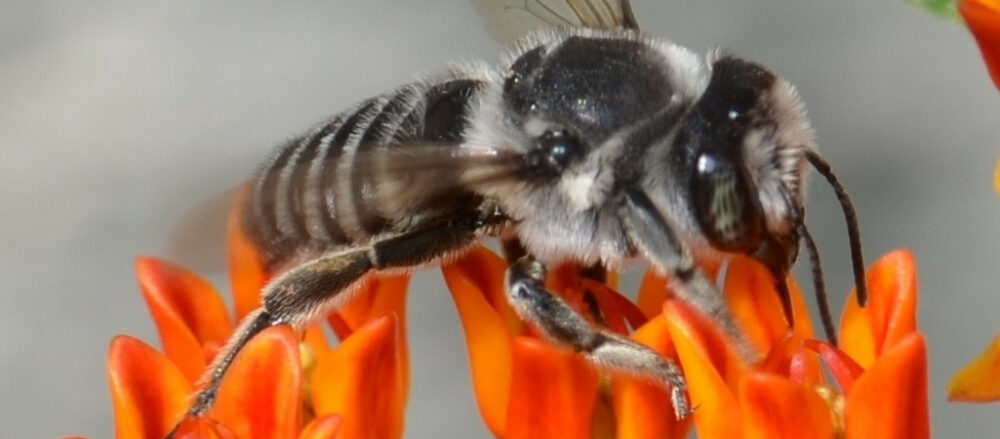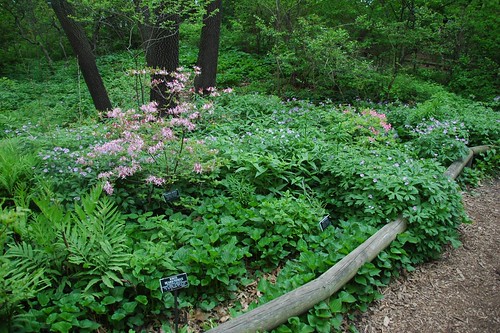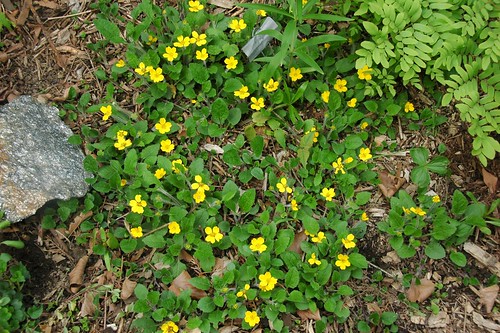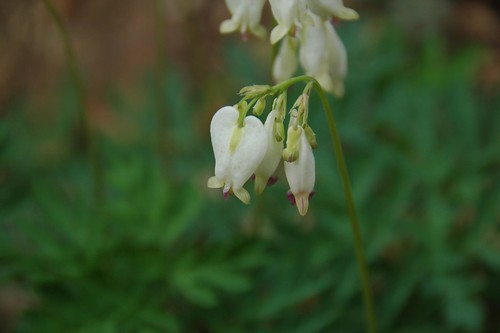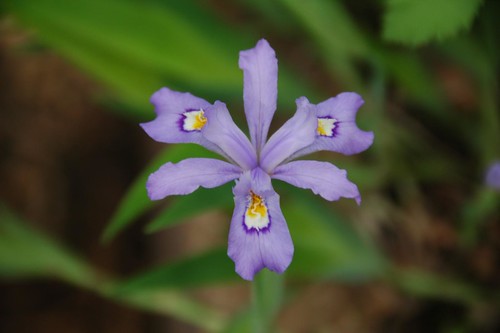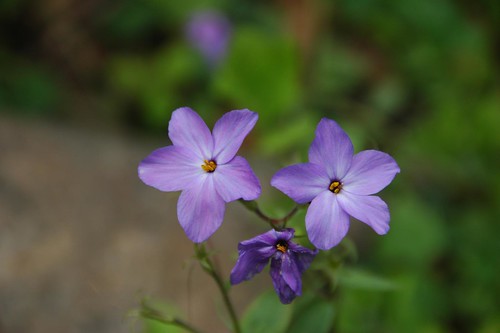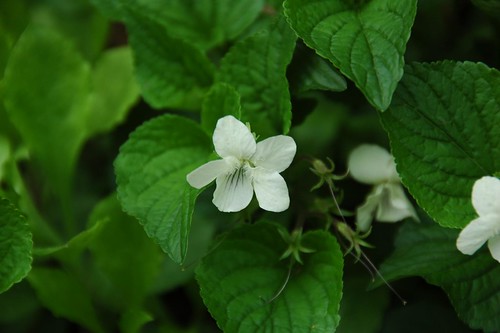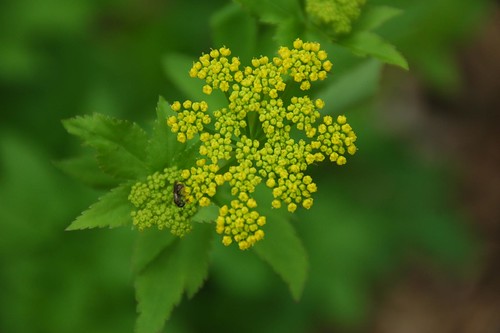[bit.ly]
Author Archives: admin
Chicago Spring Fling 2009
It’s going to take me several days to slog through the 350 photos I shot today, let alone what’s coming tomorrow. Suffice to say that I was overwhelmed and inspired by what I saw.
Here’s the outline for my entire Chicago trip. I’ll be adding the links as I write the posts for each feature of the tours.
- Shedd Aquarium
- Chicago Botanic Garden:
- Native Plant Garden
- Edible Plant Garden
- Landscape Gardens
- Model Train Garden
- Other
- Lurie Garden
- Rick Bayless Garden
- Ginkgo Botanic Garden
- Carolyn Gail’s Garden
- Franklin Park:
This is a 180-degree panoramic shot stitched together from eight hand-held and panned shots using the pano tool built into Microsoft Vista. Best viewed at the largest resolution your monitor can support. I took this shot while standing on the Nichols Bridgeway, just opened two weeks ago, which joins Millennium Park to the new modern wing of the Art Institute of Chicago. Monroe Street passes underneath, on the left and right of the photo. Downtown Chicago is to the left, and Lake Michigan is to the right. Millenium Park, including the Great Lawn and Lurie Garden, are roughly in the center of the photo.
I created this panorama of the Native Plant Garden at the Chicago Botanic Garden the same way.
[bit.ly]
Related Content
Native Plant Garden, Chicago Botanic Garden
Edible Plant Garden, Chicago Botanic Garden
Rick Bayless Garden
Alfred Caldwell Lily Pool
Links
Each Little World
Garden Punks
Gardening While Intoxicated
Mr. Brown Thumb: Words, Pictures
On the Shores of Lake Chicago: Day 1, Days 2 & 3
Our Little Acre
Prairie Rose’s Garden
Viburnum Leaf Beetle reaches New York City
Viburnum Leaf Beetle, Pyrrhalta viburni, has been confirmed in New York City this Spring:
John Jordan, Natural Resources Supervisor at Prospect Park Alliance has found evidence of the beetle there, and says that there was a confirmed report on North Brother Island (between Manhattan and Queens) last year. VLBs are suspected to be in some of the larger parks in the Bronx, northern Manhattan and northern Queens.
– Viburnum leaf beetle invading NYC?, Cornell Horticulture Blog, 2009-05-22
Damage caused by feeding larvae. Photo: Paul Weston, Cornell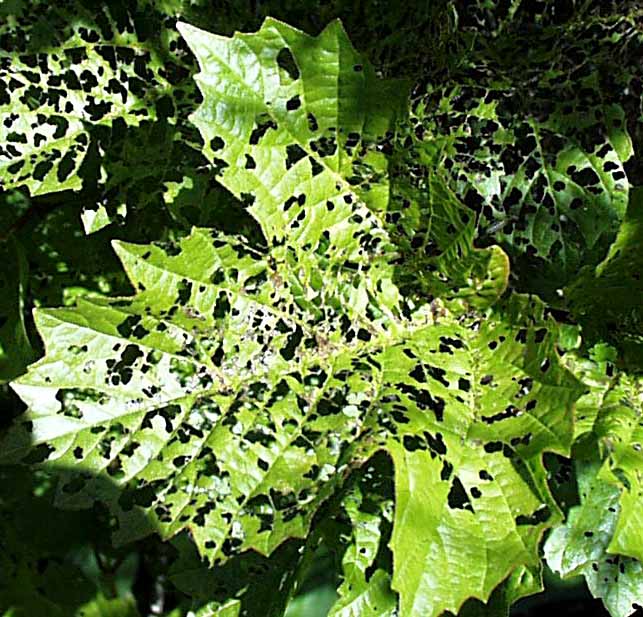
Unfortunately, my recently transplanted Viburnum dentatum is one of the highly susceptible species. When I left yesterday morning to attend Chicago Spring Fling, it was still in spectacular bloom, covered with white flowers. I would hate to lose it; it’s the largest plant I have, except for the cherry tree. I haven’t noticed any feeding damage, but I will examine it closely when I return, now that I know what to look for.
Damage caused by feeding adults. Photo: Paul Weston, Cornell
The viburnum leaf beetle, Pyrrhalta viburni (Paykull), is an invasive, non-native beetle that first appeared in New York along Lake Ontario in 1996, and has steadily spread. It is a voracious eater that can defoliate viburnum shrubs entirely. Plants may die after two or three years of heavy infestation.
Hat tip to @AboutInsects
[bit.ly]
Related Content
Viburnum dentatum, Arrowwood, 2009-04-20
Links
Cornell VLB Home Page
Viburnum leaf beetle invading NYC?, Cornell Horticulture Blog, 2009-05-22
Tracking to 100,000 and counting
Sometime this week, one of the counters I use to keep track of visitors to this blog will reach 100,000. I began tracking visits in August 2006, just three months after I launched this blog in May 2006.
Each tracking service counts things differently, and the counters I have disagree on how many visitors I’ve had. While the lead counter says I’ve had 99,859 visitors at this writing, another reports only 90,318, a discrepancy of 10%.
For this and other reasons, I don’t use these counters for exact tracking, but for trends and general patterns. For those purposes, they’re accurate enough; using trackers from different sources balances the systematic counting errors any single algorithm would incur.
So, regardless of whether it’s 90,000, or 100,000, or some other number, I am grateful for all the visitors I’ve had over the years. My goal has never been to manage my “hit count.” If it hasn’t been obvious, this is a personal blog. I strive to avoid (or at least minimize) self-indulgence, and make my posts timely, relevant, and informative. But it will always be with my own voice. I own my words. I recognize that’s not to everyone’s taste. For those of you who do visit here, welcome, and thanks.
[bit.ly]
Related Content
The Brownstoner Effect, 2007-11-10
Rabies More Popular Than Sex, 2007-03-02
Bees, a Mockingbird, and Marriage Equality
2022-05-29: This is now the FOURTH time WNYC has broken the link. Fixed again. (What the *^!% is wrong with them?!)
2022-04-13: Updated – yet again – the link to the recording which WNYC broke for the third time.
2012-05-21: Updated – again – the links which WNYC broke – again.
2011-08-23: Updated to current links from the old ones which WNYC voided.
Domestic Bliss: Blog Widow (left) and me in the gardener’s nook on the occasion of the interview. I had just transplanted the female Ilex verticillata in the background that morning.
Two weekends ago, Blog Widow and I were interviewed by WNYC’s Kathleen Horan on the topic of marriage equality – marriage for all – in New York state. The piece aired this morning, and is available on the WNYC News Blog. We make our appearance about 4:55 into the segment.
Marriage Equality, Kathleen Horan, 2009-05-22
I didn’t get to listen to it when it aired at 7:50am this morning. I thought it might be off-topic for the blog. But since most of my part of the aired conversation is about the garden, I figure it it’s not much of a stretch. Please give it a listen, and let me know what you think in the comments below.
Related Content
Wildflowers in a Flatbush Backyard, 2009-05-11
Cellophane Bees Return, 2009-05-09
Links
Debating “Marriage Equality” , Kathleen Horan, WNYC
Endangered Plants in New York State
In observance of Endangered Species Day, here is a list of just some of the plants listed as endangered in New York state. Note that plants endangered in one state may not be listed in another.
- Aconitum noveboracense, Northern wild Monkshood
- Agalinis acuta, sandplain Gerardia
- Amaranthus pumilus, seabeach Amaranth
- Asplenium scolopendrium var. americanum, Hart’s-tongue fern
- Helonias bullata swamp Pink
- Isotria medeoloides,small whorled Pogonia
- Platanthera leucophaea, eastern prairie fringed Orchid
- Schwalbea americana, American Chaffseed
- Scirpus ancistrochaetus, Northeastern Bulrush
- Sedum integrifolium ssp. leedyi, Leedy’s roseroot
- Solidago houghtonii, Houghton’s goldenrod
Links
Department of Environmental Conservation, New York State:
The Native Flora Garden
See also The Osborne Garden and The Bluebell Wood.
For the past four years I’ve been cultivating my backyard native plant garden. I’ve been adding compost and mulching with leaves and shredded Christmas trees, as much as I can get of all of it. I’m not yet able to grow The Precious (below), but I’m learning in Soil Management class that what I’ve been doing is just what’s needed to develop the humusy, woodland soil it requires. Someday, I’ll have some in my garden (obtained, of course, only from a conservation-oriented source such as the Vermont Ladyslipper Company). Meanwhile I can enjoy them in BBG’s Native Flora Garden.
Cypripedium calceolus var. pubescens, Yellow Lady-Slipper
I find the native Lady-Slipper orchids achingly beautiful. They seem more to float than to be held up by their slender stems. Maybe they would seem less fantastic if they were more common, spreading like dandelions, and less specialized in their environmental requirements. Maybe, but not by much.
There are other beauties in bloom right now. The early Spring wildflowers have been replaced by the regime of those which bloom in late Spring, and even early Summer. Geranium maculatum is one example of something I associate more with Summer than Spring. It is, in some settings I’ve seen, a common wildflower. But I covet it for my own garden nonetheless.
Geranium maculatum

Some of the Spring ephemerals are already entering senescence. Here’s Dicentra cucullaria Dutchman’s Breeches, as it appeared Tuesday afternoon in one part of the Garden. Contrast that with how it appeared just three weeks ago in a different location.
Dicentra cucullaria, Tuesday afternoon
Dicentra cucullaria, three weeks earlier
Spring ephemeral describes a life habit of perennial woodland wildflowers which develop aerial parts (i.e. stems, leaves, and flowers) of the plant early each spring and then quickly bloom, go to seed and then quickly die back to its underground parts (i.e. roots, rhizomes, and bulbs) for the remainder of the year. This strategy is very common in herbaceous communities of deciduous forests as it allows small herbaceous plants to take advantage of the high amount of sunlight reaching the forest floor prior to the leaf-out of woody plants.
– Wikipedia: Ephemeral plant
It’s interesting that Wikipedia lists Dicentra eximia among the Spring ephemerals. It’s still going strong at BBG. My experience is that it blooms for months, and lasts at least through the summer, barring drought. This is one of the things that makes it an excellent performer in the garden.
Tuesday afternoon, near the Bog habitat
Interspersed with Dodecathon meadia in the Serpentine Rock habitat
The march of the Rhododendron in the Osborne Garden continues into the Native Flora Garden, more evidence that early Summer is replacing late Spring.
Rhododendron prinophyllum, Rosebud Azalea
Rhododendron periclymenoides, Pinkster Azalea
Two purple beauties from the Pine Barrens habitat, something which I would only be able to recreate in container in my garden.
Viola brittoniana, Coast Violet
Lupinus perennis, Sundial Lupine
[bit.ly]
Related Content
Native Flora Garden, Brooklyn Botanic Garden, 2009-04-27
Native Flora Garden, BBG, 2008-04-18
Photos from Tuesday (Flickr photo set)
All my photos (Flickr collection)
More on native plants
Wildflower Week in NYC, 5/1 through 5/9, 2009-04-29
Growing a Native Plant Garden in a Flatbush Backyard, 2007-08-06
Resources: Native Alternatives to Invasive Plants, 2007-05-22
Native Plant profile: Dicentra eximia, Bleeding-heart, 2006-05-22
Notes from a visit to the Brooklyn Botanic Garden, Late July 2005
Links
The Osborne Garden
See also The Native Flora Garden and The Bluebell Wood.
The Osborne Garden of the Brooklyn Botanic Garden, with the Brooklyn Museum as a backdrop, yesterday afternoon.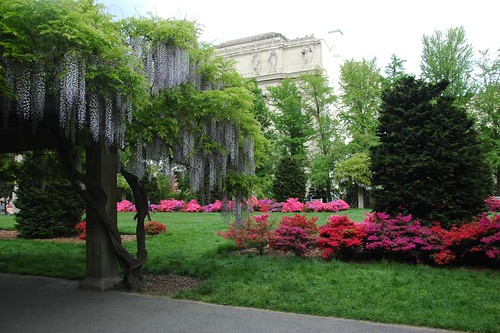
As befits a formal garden, the plant palette of the Osborne Garden – the grand entrance to the Brooklyn Botanic Garden from Eastern Parkway – is somewhat restricted. The main body of the design is a large rectangular lawn, flanked by symmetrical ranks of azaleas, crabapples, and Wisteria arbors. But who’s complaining.
The symmetry is obvious as one enters the garden from Eastern Parkway. But that symmetry is deceptive. There are decidedly different experiences of entering into the garden when one goes to the left or, as I prefer, to the right. There’s a progressive sense of enclosure, in part because of the rock wall and the rise of Mount Prospect Park. And the light is decidedly different, more sheltered and shadowed, on the right-hand, western path.
With its rock wall and bedding displays, the western path also offers more horticultural variety.
And best of all, it leads to the shade garden. The azaleas of the Osborne Garden hint at the explosion of Rhododendron in bloom throughout the Garden right now.
And just to the left of that border is the secondary entrance to the Native Flora Garden, of which I’ll have photos tomorrow.
[bit.ly]
Related Content
The Osborne Garden and Shade Garden at the Brooklyn Botanic Garden, 2008-05-16
The Osborne Garden, 2008-04-06
Osborne Garden, BBG (Flickr Photo Collection)
Links
Osborne Garden, Brooklyn Botanic Garden< /span>
The Bluebell Wood
See also The Native Flora Garden and The Osborne Garden.
The Bluebell Wood at the Brooklyn Botanic Garden is at its peak. See it this week, or wait another year.
More than 45,000 bluebells (Hyacinthoides hispanica ‘Excelsior’) are planted under a mature stand of oak, birch, and beech trees just south of Cherry Esplanade. In May, the bluebells burst into flower and create an enchanting woodland display.
– The Bluebell Wood, Brooklyn Botanic Garden
The Bluebell Wood is one of those big, cymbal-crashing displays for which only large gardens can afford space. Like Daffodil Hill, this really only looks good at one moment of one season. The rest of the year, at best, it creates the negative space to appreciate the trees – oaks, here – and the views through to the other gardens beyond. At its worst, it’s an eyesore, when the foliage is bedraggled and brown, and the Wood is just something you walk through, preferably quickly.
But for now, the Bluebell Wood is having its moment, and it’s a glorious one.
[bit.ly]
Related Content
The Bluebell Wood at the Brooklyn Botanic Garden, 2008-05-19
My photos of BBG’s Bluebell Wood
Links
Wildflowers in a Flatbush Backyard
Last week was NYC Wildflower Week. Appropriately, here are some wildflowers blooming over the past week in my backyard native plant garden.
Wildflowers blooming near the gardener’s nook in my backyard for last May’s Garden Blogging Bloom Day.
- Aquilegia canadensis, Eastern Columbine
- Chrysogonum virginianum ‘Allen Bush’, Green-and-Gold
- Dicentra eximia ‘Aurora’, White-flowering Eastern Bleeding-Heart, Turkey Corn
- Iris cristata, Crested Iris
- Phlox stolonifera
- Viola striata
- Zizia aurea, Golden Alexanders
- Brunnera macrophylla, Large-leaf Brunnera, Siberian Bugloss
Aquilegia canadensis, Eastern Red Columbine
Somehow, I have no photos of this from my garden in Flickr. Yet it’s been a favorite of mine for decades.
Native range is eastern North America. Widespread in New York state. Native to all five boroughs of NYC.
Aquilegia canadensis, Eastern Red Columbine, 2006-05-31
Chrysogonum virginianum ‘Allen Bush’, Green-and-Gold
A great groundcover for partial shade. Several cultivars are available. To my eye, all vary only slightly from the species, though I haven’t grown them side-by-side.
Individual flowers look like shaggy sunflowers. 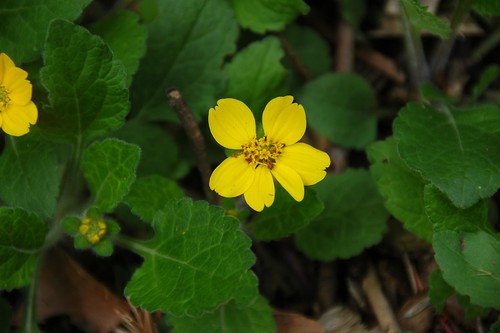
Native range is Mid-Atlantic and Southeastern United States. Native to only one New York upstate county. Not native to NYC.
Dicentra eximia ‘Aurora’, Eastern Bleeding-Heart, Turkey Corn
A white-flowering cultivar of the native Eastern Bleeding Heart. Not every white-flowering form of a plant is successful. This is one that is equally lovely as the species, bringing its own graces to the structure of the inflorescence and individual flowers. Also a good choice for the shady white garden.
This plant is maybe three years old now. Not only has the original plant spread in size each year, this Spring I’ve noticed little seedlings cropping up around the mother plant. I’ll be curious to see how these develop, and what the flower color wil be in the children.
Dicentra eximia, Bleeding-heart, 2006-05-22
Dicentra eximia, Eastern bleeding-heart (Flickr photo set)
Iris cristata, Crested Iris
Really beautiful, if a bit of a finicky grower. It seems to be at its best when grown on a slight slope with ample mulch. The stems trail through the mulch, the fans oriented down-slope. Sulks during the summer. Needs consistent moisture during the hot summer months and good drainage during the winter or it will disappear. Where it’s happy, it makes a great groundcover.
Native to Mid-Atlantic and interior Eastern United States, but not New York.
Phlox stolonifera, Creeping Phlox
One of the best wildflower ground covers you can grow in the garden. In the trade, you’re more likely to find cultivars selected for flower color – such as ‘Bruce’s White’ and ‘Sherwood Purple’ – rather than the unqualified species. They all seem equally fine to me. (Mine is also a cultivar, but its name escapes me at the moment.) The flowers are usually fragrant, reminiscent of grape jelly.
Native range is most of Eastern United States, but only found in two upstate New York counties, not NYC.
Viola striata, Pale Violet, Striped Cream Violet
The “oldest” plant in this post, this population came from my second city garden on 5th Street in Park Slope. The original plants were given to me 8-10 years ago by a gay couple who lived across the street. They have a beautiful shady backyard garden growing many wildflowers collected from their home in upstate New York.
Native to Eastern North America. Native to several counties in New York, but not NYC.
Zizia aurea, Golden Alexanders
This plant is a recent discovery for me. I had never heard of it before picking it up from Gowanus Nursery last Spring. Now I see it all over the place, and it’s a fine groundcover. You can’t see it in this photo, but the foliage is also handsome.
Native to NYC, but not Brooklyn.
Brunnera macrophylla, Large-leaf Brunnera, Siberian Bugloss
Okay, Brunnera is not a native wildflower on this continent – it’s native range is Eastern Europe – but it is blooming in the backyard and it’s so pretty I had to take a picture of it. This plant is a refugee from the sideyard of Frank, a neighbor, professional gardener and fellow garden blogger at New York City Garden.
[bit.ly]
Related Content
Growing a Native Plant Garden in a Flatbush Backyard, August 6, 2007
